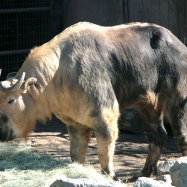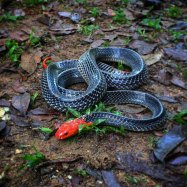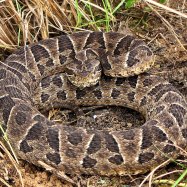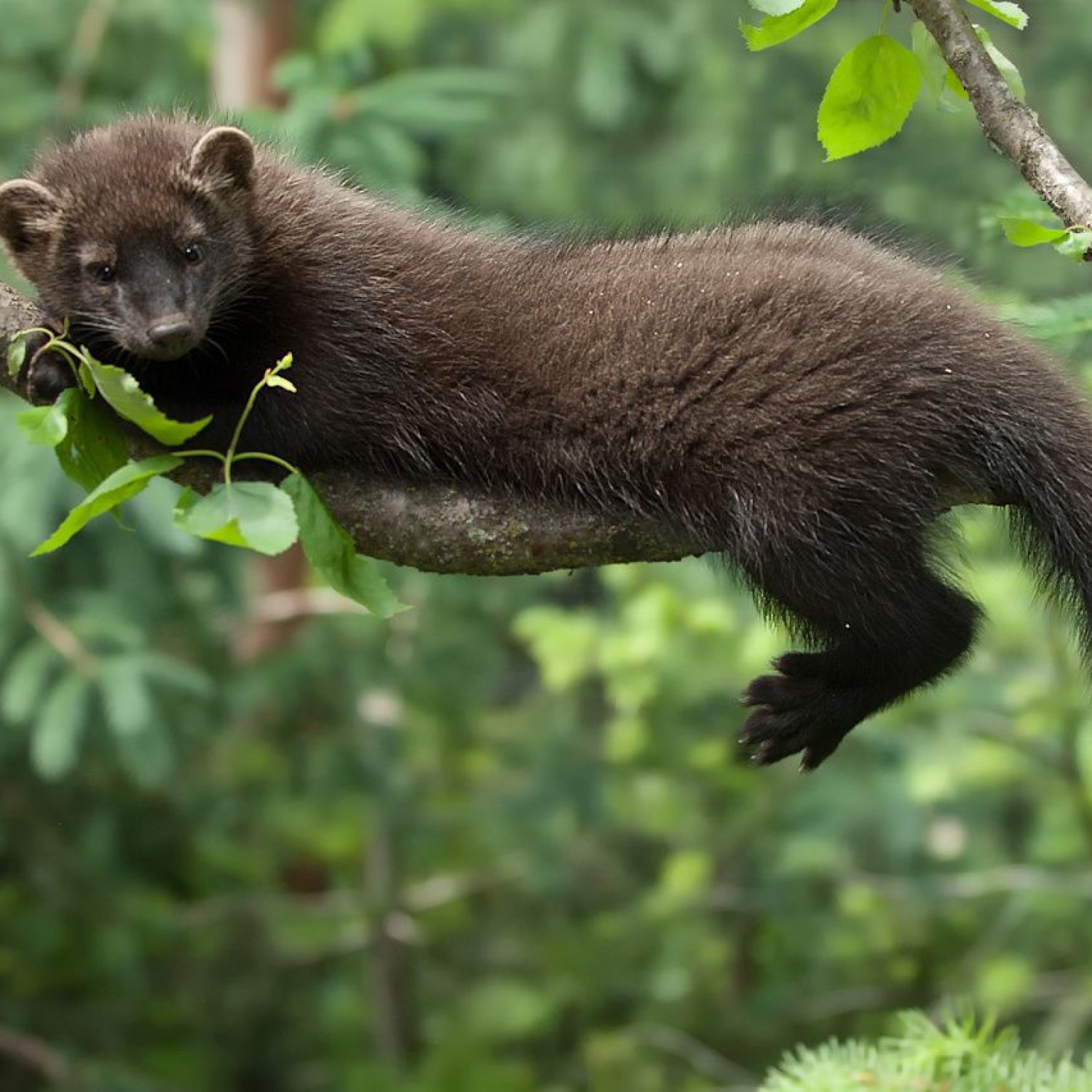
Fisher
30-90 cm
The Fisher, also known as the Fisher cat, is a mustelid found in North America. Resembling a weasel, it can grow up to 30-90 cm in length. Despite its name, it is not a cat, but a carnivorous mammal in the same family as otters and wolverines. Keep an eye out for this elusive and fascinating creature on your next trip to North America! #Fisher #Mustelidae #NorthAmerica
Animal Details Summary:
Common Name: Fisher
Kingdom: Animalia
Habitat: Boreal and montane forests
The Fascinating and Elusive Fisher: North America's Little-Known Carnivore
The forests of North America are home to a diverse array of animals, from the majestic moose to the cunning coyote. However, one creature that often goes unnoticed and understudied is the fisher - a small, dark, weasel-like mammal that roams the boreal and montane forests of Canada and the United States. Known scientifically as Pekania pennanti, the fisher is a mysterious and elusive creature that has captured the curiosity of many nature enthusiasts. In this article, we will delve into the fascinating world of the fisher and learn about its unique characteristics and behavior Fisher.Classification and Distribution
The fisher belongs to the animal kingdom, phylum Chordata, and class Mammalia, making it a distant cousin of other well-known mammals such as bears, wolves, and raccoons. It is categorized under the order Carnivora, a fitting designation as these animals are known for their carnivorous diet. Within this order, the fisher belongs to the family Mustelidae, which includes other fierce predators such as wolverines and martens.
The fisher is found in the boreal and montane forests of North America. Its geographical distribution spans across most of Canada and the northern portions of the United States, with populations also found in California, Oregon, and Idaho. This elusive creature prefers to make its home in remote, heavily forested areas, making it difficult to study and track.
Physical Appearance
The fisher is a relatively small mammal, with a body length of 30-90 cm, about the size of a large housecat. It is known for its dark brown or black coloration, which helps it blend in seamlessly with its forested surroundings. Its fur is long and dense, providing insulation in the harsh winter months Feist.
The long, slender body of the fisher is similar to that of a weasel, with a pointed snout and small, rounded ears. Its legs are short and stout, making it well-adapted for moving through dense vegetation and snow-covered terrain. Fishers also possess retractable claws, allowing them to climb trees with remarkable dexterity.
Habitat and Feeding Habits
As previously mentioned, fishers are primarily found in boreal and montane forests, where they make their dens in tree hollows, rock crevices, or underground burrows. These creatures are solitary and territorial, with each fisher having a home range of around 10-20 square miles.
Being carnivorous, fishers have a varied diet that includes small mammals such as mice, squirrels, and rabbits, as well as birds, insects, and even carrion. They are agile hunters, using their sharp claws and teeth to take down prey, and their small size allows them to move through dense vegetation undetected. Interestingly, fishers are also known to prey on porcupines, despite the inherent danger of their quills.
Adaptations and Survival Tactics
Surviving in the harsh environment of the boreal and montane forests requires specific adaptations, and fishers have evolved to thrive in these conditions. Their dark, thick fur provides insulation in the cold winter months, while their sharp claws and agility make them formidable hunters. Additionally, fishers have a secret weapon that helps them navigate the trees - their long, bushy tails. These tails act as a balancing tool, allowing fishers to move with ease on narrow branches and thick snow-covered branches.
Another fascinating adaptation of the fisher is its ability to survive in its harsh surroundings by staying active and foraging during the night-time. While most humans are asleep, these creatures are out hunting and exploring their territories, using the cover of darkness to their advantage.
The Fisher's Role in the Ecosystem
As predators, fishers play a crucial role in maintaining the balance of their ecosystem. They help control the population of small mammals and birds, preventing them from overgrazing and impacting the vegetation of their habitat. Additionally, fishers have a clear impact on the diet and behavior of their prey, leading to a complex web of interactions between these animals.
Fishers also have a close relationship with other animals in their ecosystem. For example, they often compete with other carnivores such as lynx and coyotes for prey, and they may even prey on each other's young. Ultimately, the presence of fishers is vital to the health and stability of their habitat.
Threats and Conservation Efforts
Despite their important role in their environment, fishers face numerous threats that endanger their survival. Historically, they have been hunted and trapped for their fur, leading to a significant decline in their population. Additionally, habitat destruction and fragmentation due to human activities such as logging and urbanization have further reduced suitable fisher habitats.
Thankfully, various conservation efforts are being made to protect and preserve these elusive creatures. In some areas, hunting and trapping have been restricted or prohibited, allowing fisher populations to recover. Furthermore, organizations such as the Fishers and Natural Resources Conservation Service are actively working to conserve and monitor fisher populations across North America.
In Conclusion
The fisher is an intriguing and essential part of the North American ecosystem, despite being relatively unknown to many people. Its unique adaptations, hunting techniques, and vital role in the food chain make it a worthy subject of study and admiration. However, their elusive nature and remote habitats continue to pose challenges for researchers and conservationists. As such, it is crucial for us to continue our efforts in preserving and protecting these remarkable animals for generations to come.

Fisher
Animal Details Fisher - Scientific Name: Pekania pennanti
- Category: Animals F
- Scientific Name: Pekania pennanti
- Common Name: Fisher
- Kingdom: Animalia
- Phylum: Chordata
- Class: Mammalia
- Order: Carnivora
- Family: Mustelidae
- Habitat: Boreal and montane forests
- Feeding Method: Carnivorous
- Geographical Distribution: North America
- Country of Origin: Canada and United States
- Location: North America
- Animal Coloration: Dark brown or black
- Body Shape: Weasel-like
- Length: 30-90 cm
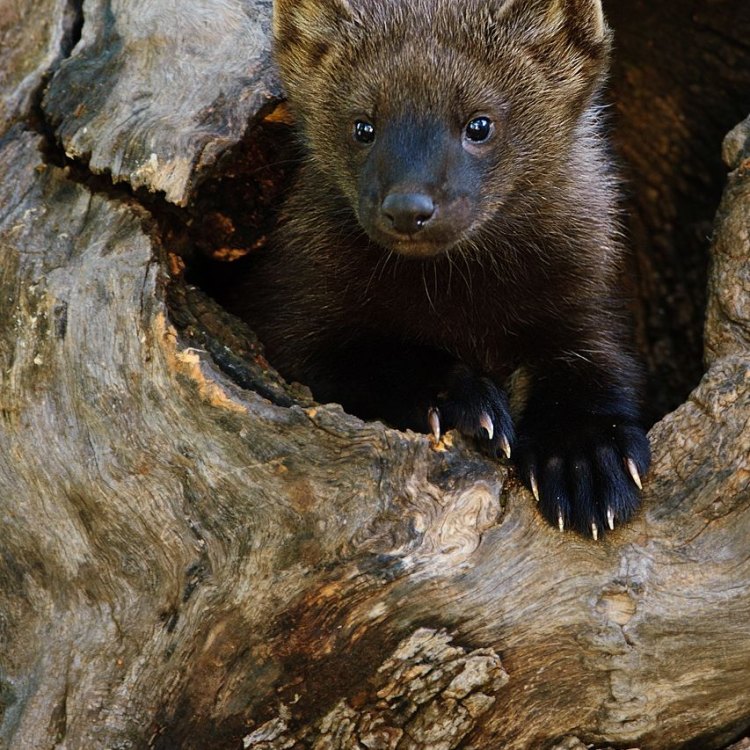
Fisher
- Adult Size: Medium
- Average Lifespan: 4-8 years
- Reproduction: Sexual
- Reproductive Behavior: Polygynous
- Sound or Call: High-pitched screams
- Migration Pattern: Non-migratory
- Social Groups: Solitary
- Behavior: Nocturnal and arboreal
- Threats: Habitat loss, trapping, and predation
- Conservation Status: Least Concern
- Impact on Ecosystem: Control of prey populations
- Human Use: Fur trapping
- Distinctive Features: Bushy tail and long body
- Interesting Facts: They are excellent climbers and can descend trees headfirst
- Predator: Coyotes, bobcats, and great horned owls
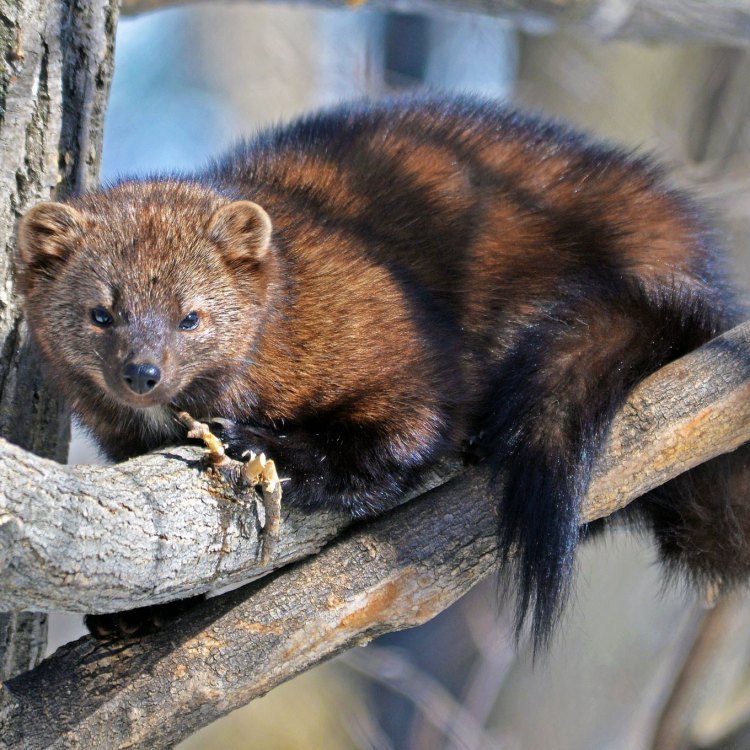
Pekania pennanti
Fisher: A Fascinating and Elusive Creature of the Northern Forests
Deep in the remote woodlands of North America, a mysterious creature roams the forest floor with stealth and grace. Its long, slender body glides through the dense underbrush, while its bushy tail helps it maintain balance as it leaps through the treetops. Meet the fisher, a medium-sized mammal with a fascinating and elusive nature.In this article, we will explore the unique features and behaviors of the fisher, from its reproductive habits to its impact on the ecosystem PeaceOfAnimals.Com. We will also delve into the threats it faces and its conservation status, shedding light on this lesser-known species of the northern forests.
A Medium-Sized Marvel: The Size and Lifespan of a Fisher
The fisher (Pekania pennanti), also known as the fisher cat, is a member of the weasel family and is native to the forests of North America. It is a medium-sized mammal, with adults ranging from 20-30 inches in length and weighing between 4-18 pounds. Its size and weight can vary depending on the region it inhabits, with fishers in Canada typically being larger than those in the United States.On average, fishers have a lifespan of 4-8 years in the wild, with females tending to live longer than males. However, in captivity, fishers have been known to live up to 14 years.
Love and Reproduction: A Polygynous, Sexual Species
Fishers are solitary animals, except during mating season. They are polygynous, meaning males will mate with multiple females. Mating typically occurs in early spring, with females giving birth to litters of 1-4 kits (baby fishers) in the spring of the following year Fainting Goat.After giving birth, the female fisher creates a den in a hollow tree or rock crevices to protect her young from predators. The kits are born blind and helpless, and it takes about eight weeks for them to open their eyes and become more active. They will stay with their mother for about four months until they are weaned and can fend for themselves.
The Charming Shrill of the Fisher: High-Pitched Screams and Calls
One of the most distinctive features of the fisher is its high-pitched screams and calls, which can be heard during mating season and when a female is in distress. These sounds are often described as chilling and resemble a child's scream, hence the name "fisher cat."Fishers are generally quiet animals and do not make many vocalizations, except during the breeding season. However, they do communicate through scent marking, using their anal glands to leave a musky odor as a way to mark their territory.
Homebodies: The Non-Migratory Nature of Fishers
Unlike other animals that may migrate to warmer climates during the winter, fishers are non-migratory creatures. They prefer to live in a small home range, typically spanning about five square miles, and will stick to that area year-round. They are also known to be somewhat territorial, with males and females having separate home ranges that may overlap.Surviving Solo: The Solitary Social Life of a Fisher
Fishers are solitary creatures, rarely interacting with others of their kind except during mating season. They spend most of their time alone, foraging for food and sleeping in dens they create in hollow trees or rock crevices. However, during harsh winters, multiple fishers may share a den to stay warm.Unlike other animals that may form social groups or packs, fishers prefer a solitary lifestyle. They are also nocturnal animals, meaning they are most active at night, making it challenging to spot them in the wild.
The Elusive Nature of Fishers: Behavior and Habits
Fishers are elusive creatures that are rarely seen in the wild, adding to their mysterious nature. Their nocturnal and solitary behavior makes them challenging to study, and their arboreal nature means they spend much of their time in the treetops.As excellent climbers, fishers are known for their ability to descend trees headfirst, thanks to their rotating hind foot. They are also skilled hunters, preying mainly on small mammals such as snowshoe hares, porcupines, and squirrels. However, they have also been known to take down larger prey, including rabbits and deer fawns.
A Fragile Existence: Threats to Fishers in the Wild
Sadly, fishers face numerous threats in the wild, leading to a decline in their population. Habitat loss is one of the main reasons for their diminishing numbers, as human activities such as logging and development continue to destroy their forest homes.Fishers also fall victim to trapping for their fur, which is used in the fashion industry. Although strict regulations are in place to control fur trapping, illegal trapping still occurs, contributing to the decline of fisher population numbers.
Additionally, fishers face predation from other animals in the wild, such as coyotes, bobcats, and great horned owls. These predators can pose a significant threat to fishers, especially kits that are helpless and vulnerable.
Conservation Status: Least Concern, but Still Threatened
According to the International Union for Conservation of Nature (IUCN), the fisher is listed as "Least Concern," meaning it is not at immediate risk of extinction. However, this does not mean that the fisher is thriving in the wild. Despite its resilient nature, the fisher's population is declining, and it is considered a species of concern in some regions, such as Washington state.Conservation efforts are ongoing to protect the fisher, including habitat management and strict regulations on trapping. However, these efforts need to continue and expand to ensure the long-term survival of this fascinating creature.
The Silent Regulators: The Impact of Fishers on Ecosystems
While fishers may not be the most well-known animal in the forest, they play a vital role in regulating prey populations. As skilled hunters, fishers help control the numbers of small mammals, which, if left unchecked, could cause imbalances in the ecosystem.In areas where fishers have been reintroduced after previous eradication, there have been significant improvements in the health and diversity of the forest. This shows just how essential fishers are in maintaining a healthy and balanced ecosystem.
The Use of Fishers by Humans: Fur Trapping and More
Unfortunately, humans have also long been a threat to fishers, not just through habitat destruction and trapping, but also through their use of fishers for other purposes. In the past, fishers were often hunted for their meat, which was considered a delicacy. Additionally, their fur has been used in the fashion industry, and their musky scent has been used in perfumes.Today, there is a growing awareness of the need to protect and conserve fishers, and their use for these purposes is now highly restricted or illegal in most places. However, their fur is still highly sought after, making them a target for illegal fur trading.
A Creature of Many Talents: The Unique Features of the Fisher
From their pointed ears and sharp claws to their bushy tail and long, sleek body, fishers have many unique features that make them stand out in the animal kingdom. But it is not just their physical characteristics that make them remarkable. Their skills as climbers, hunters, and overall survivors in their harsh northern habitat are truly impressive.As we continue to learn more about fishers and their elusive nature, we gain a better understanding of their importance in the delicate balance of the northern forest ecosystem.
Predators of the Fisher: Coyotes, Bobcats, and Great Horned Owls
Despite being skilled hunters themselves, fishers are not without their own predators. Coyotes, bobcats, and great horned owls are among the top predators that fishers need to watch out for in the wild.Coyotes are opportunistic predators and will hunt fishers or prey upon fisher kits if given the chance. Similarly, bobcats are also efficient predators and can take down a fisher through stealth and surprise. As for great horned owls, they are fierce hunters with excellent eyesight and powerful talons, making them a significant threat to fishers.
In Conclusion: A Fascinating and Elusive Creature of the Northern Forests
The fisher may not receive as much attention as other animals in the forest, but it is undoubtedly a fascinating and elusive creature with many unique features and behaviors. From its solitary social life and nocturnal habits to its impactful role in maintaining a balanced ecosystem, the fisher is an essential species in the northern forests of North America.However, with threats such as habitat loss and trapping on the rise, it is crucial to continue efforts to protect and preserve the fisher for generations to come. By understanding and appreciating this mysterious mammal, we can ensure that it remains a part of the rich biodiversity of our forests.
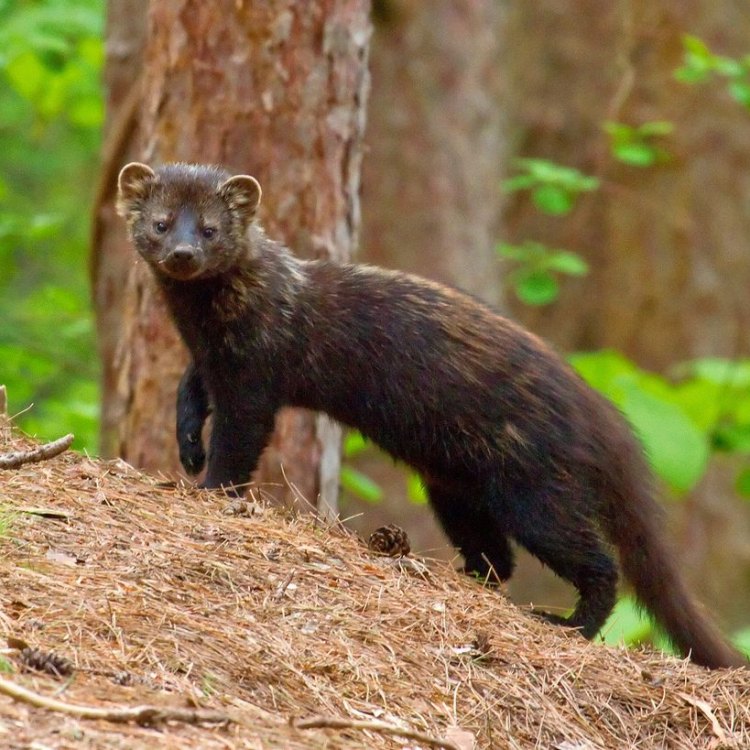
The Fascinating and Elusive Fisher: North America's Little-Known Carnivore
Disclaimer: The content provided is for informational purposes only. We cannot guarantee the accuracy of the information on this page 100%. All information provided here may change without prior notice.



